If you’re searching for a beautiful, low-maintenance, and space-saving tree for a small yard or modern landscape, the columnar ginkgo tree may be exactly what you need. Known for its narrow shape, brilliant golden fall color, and exceptional resilience, this tree has become one of the most in-demand choices for homeowners, landscapers, and city gardeners who want elegance without the hassle. Its ability to thrive in tight spaces makes it especially appealing for urban landscapes — where width is often limited, but vertical beauty is welcome. 🌿
But while the columnar ginkgo is famously easy to care for, planting and maintaining it correctly will dramatically improve its health, structure, color, and long-term growth. This guide covers everything — from planting and shaping to troubleshooting and landscape design — giving you the knowledge that only seasoned arborists and horticulture experts typically share.
What Is a Columnar Ginkgo Tree? 🌳
A Brief Botanical Overview
The columnar ginkgo is a cultivated form of Ginkgo biloba, one of the oldest living tree species on Earth — often called a “living fossil.” Unlike the broader, spreading shape of the classic ginkgo tree, columnar varieties are bred to grow vertically, maintaining a slim, upright profile ideal for narrow spaces, pathways, and compact home landscapes.
These trees feature:
- Iconic fan-shaped leaves
- Incredible air-pollution tolerance
- A naturally symmetrical shape
- Predictable, controlled growth
- Brilliant golden foliage in autumn 🍂
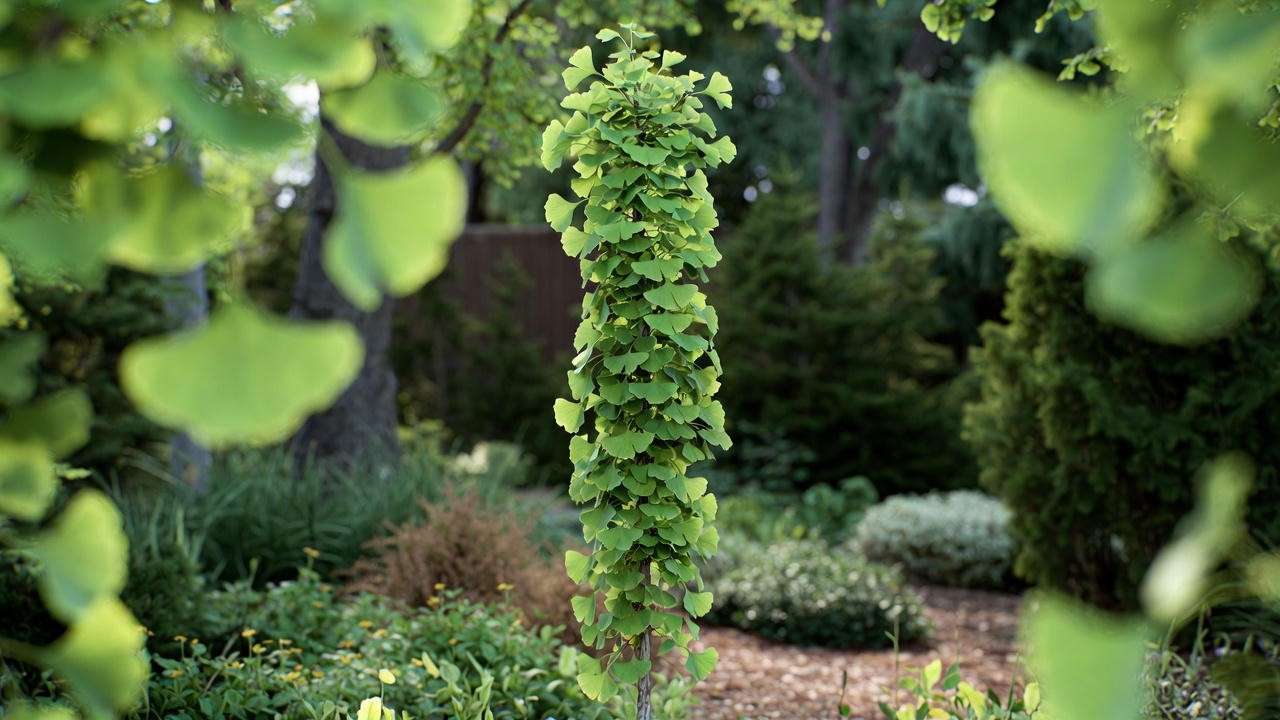
Popular Columnar Ginkgo Cultivars
Different cultivars offer unique height, width, and form:
‘Fastigiata’
- Very upright
- Slow-growing
- Excellent for extremely narrow spaces
‘Princeton Sentry’
- The most popular cultivar
- Consistently narrow form
- Male selection (no messy fruit)
‘Magyar’
- Moderately narrow
- Slightly faster growth
- Dense branching structure
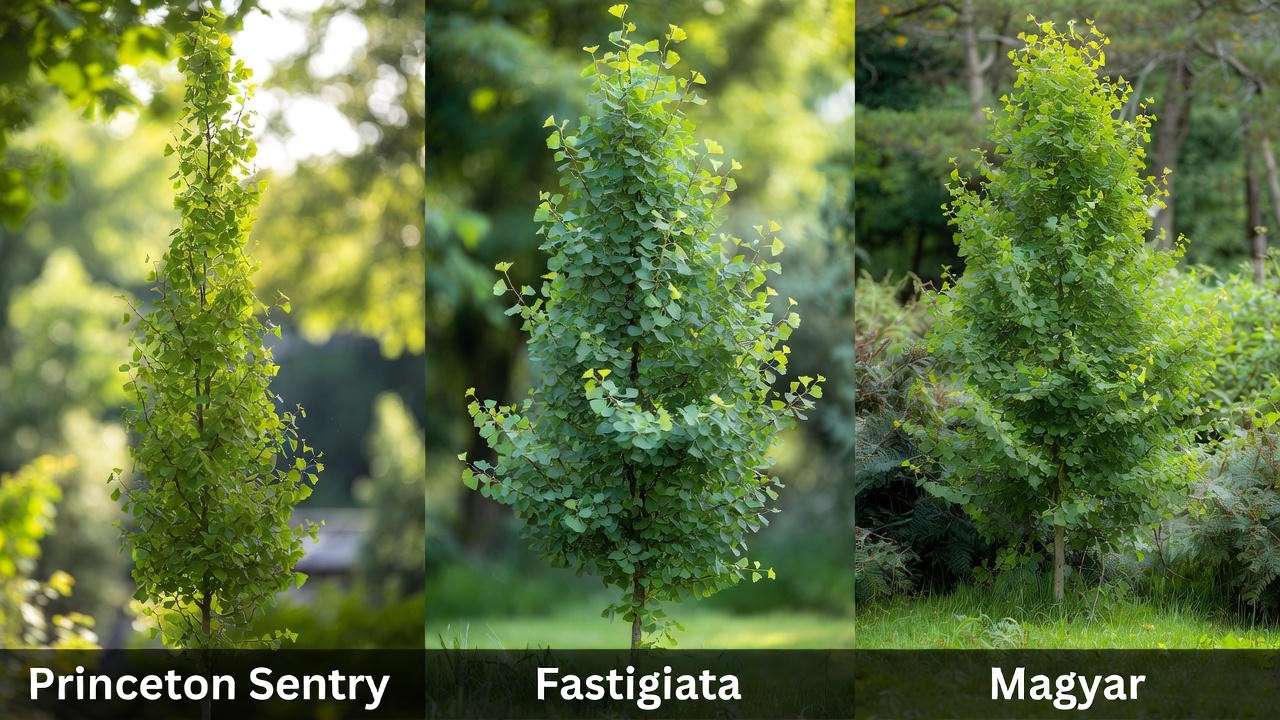
Why Gardeners Love It
The columnar ginkgo is beloved for:
- Urban resilience (pollution, salt, compacted soil)
- Pest resistance
- Seasonal interest year-round
- Low maintenance requirements
- Long lifespan — potentially centuries
If you want a tree with low risk and high reward, this is it.
Benefits of Growing a Columnar Ginkgo Tree 🌟
Ideal for Small and Narrow Spaces
This tree thrives where most others fail — alongside driveways, between houses, in courtyard gardens, or in narrow city lots. Its slim silhouette adds vertical height without overwhelming the space.
Low Maintenance and Highly Adaptable
The columnar ginkgo tolerates:
- Heat
- Air pollution
- Salt spray
- Urban soil compaction
- Dry conditions once established
This makes it ideal for busy homeowners or landscapes with poor soil conditions.
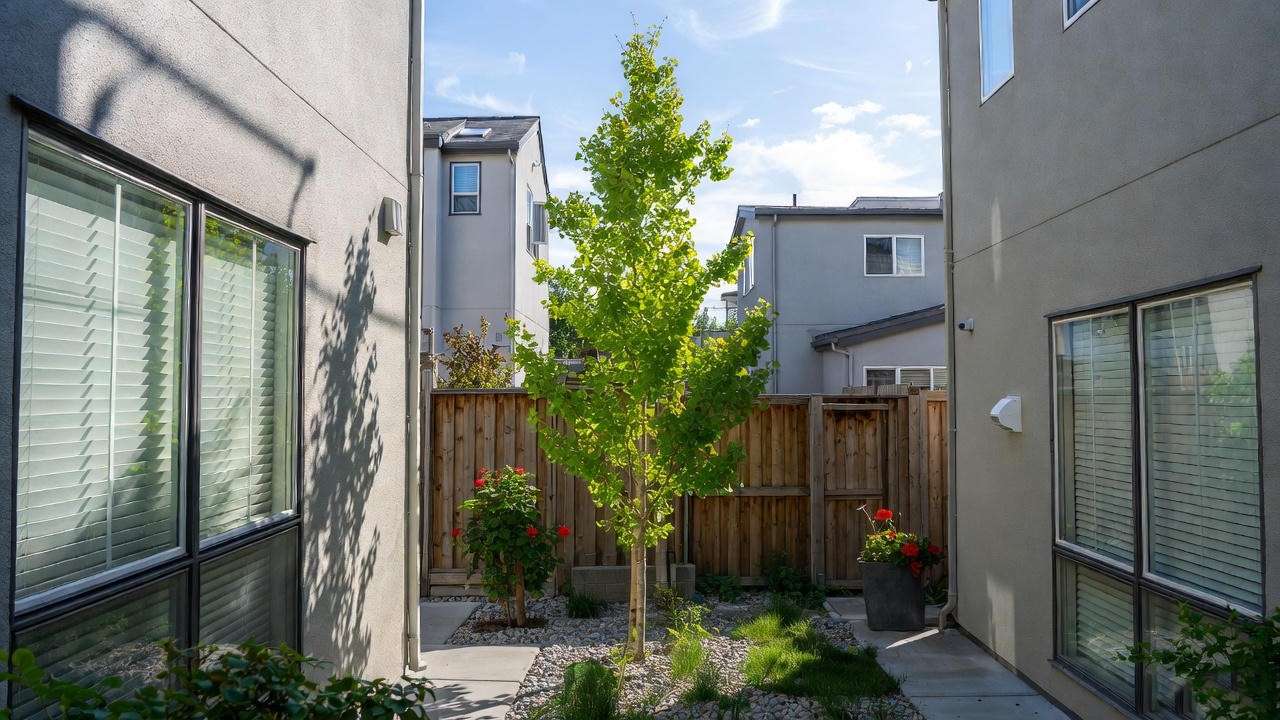
A Tree With Year-Round Appeal
The tree transforms across seasons:
- Spring: Soft, bright-green leaves emerge
- Summer: Dense canopy with a tropical texture
- Fall: An iconic golden explosion of color ✨
- Winter: Architectural branching adds structure
How to Choose the Right Location 🌞
Sunlight Requirements
Columnar ginkgo trees thrive in full sun — ideally 6+ hours of direct sunlight daily.
More sunlight = stronger growth + brighter fall color.
Soil Preferences
While adaptable, they grow best in:
- Loamy soil
- Moderately acidic to neutral pH
- Well-drained substrates
They hate soggy or waterlogged roots — drainage matters!
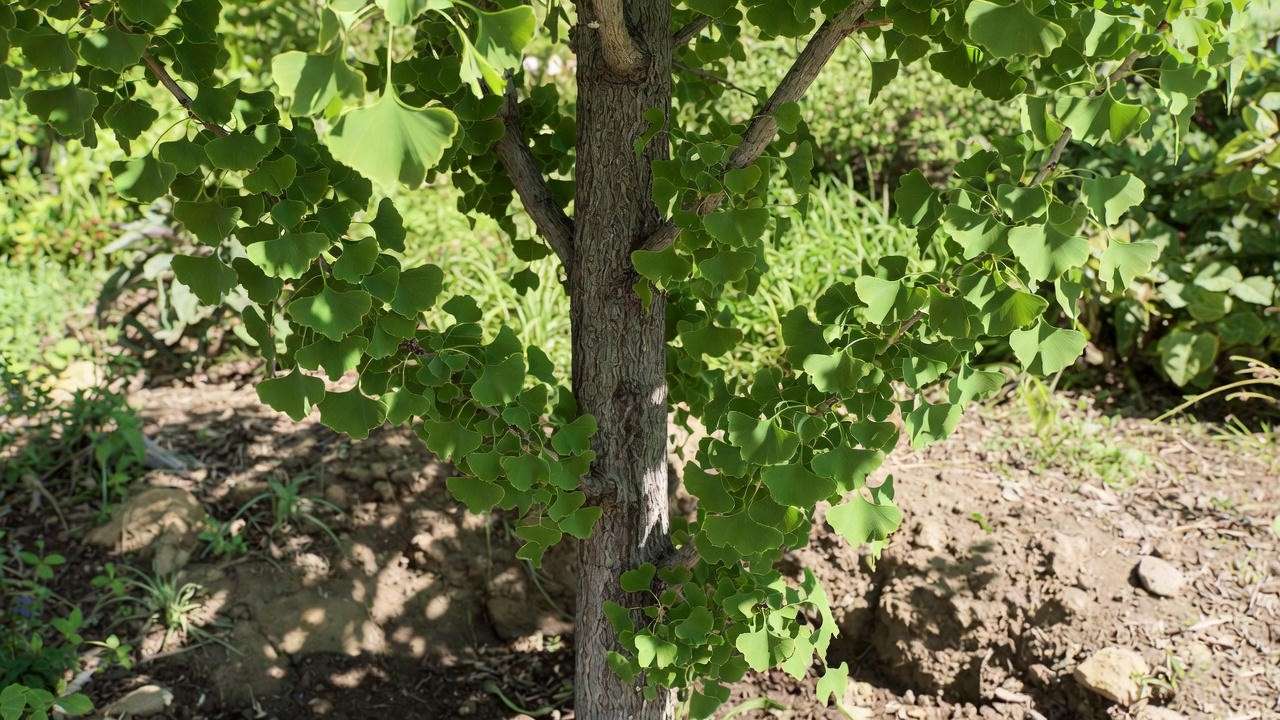
Space Requirements & Spacing Tips
Even though they are narrow, they still need adequate root and canopy space:
- Plant at least 3–5 feet away from structures
- Roots are not invasive, but require oxygen and loose soil
- Allow enough vertical clearance (up to 40–50 feet for some cultivars)
If you’re planting multiple trees along a walkway or property line:
- Space them 6–10 feet apart for a uniform row
- Space them 10–15 feet apart for a more open aesthetic
Planting a Columnar Ginkgo Tree: Step-by-Step 🌱🛠️
When to Plant (Best Seasons)
The ideal planting seasons are:
- Early spring (before heat stress)
- Early fall (before winter dormancy)
Avoid planting during mid-summer unless absolutely necessary.
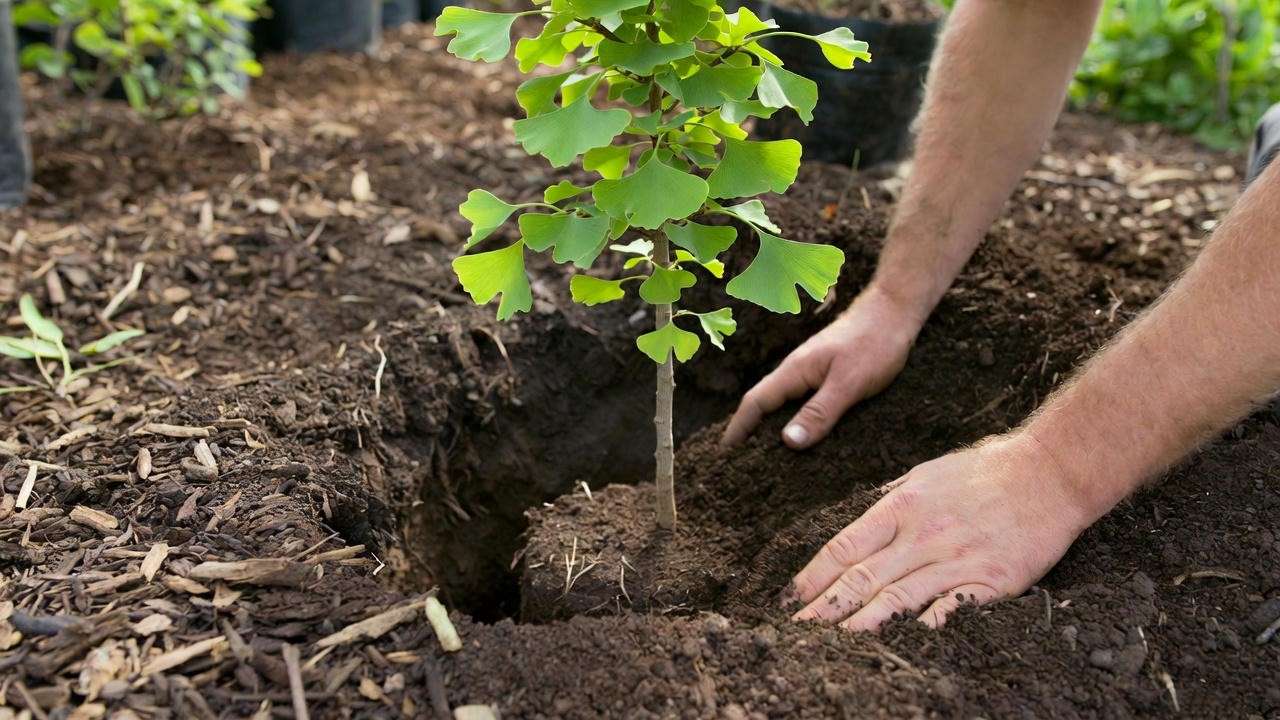
How to Prepare the Planting Site
Expert preparation improves early establishment:
- Loosen soil in a 3–4 foot wide area
- Remove weeds, rocks, or compacted layers
- Add compost if soil is very poor
Do not over-amend — ginkgos prefer native soil.
Planting Instructions
- Dig a hole twice as wide but not deeper than the root ball.
- Place the tree so the top of the root flare is level with the soil.
- Backfill gently to eliminate air pockets.
- Water deeply after planting.
- Stake only if the site is windy; remove stakes after 1 year.
Ongoing Care and Maintenance 🌧️💧
Watering Guidelines
Young Trees (Years 0–2)
Water weekly, soaking the soil deeply.
Adjust based on rainfall and temperature.
Established Trees
Water during:
- Extended drought
- Extreme heat
- The first month after planting
Signs of water issues:
- Underwatering: Curling or browning leaf edges
- Overwatering: Yellowing leaves, soft roots, swampy smell
Fertilization Tips
Columnar ginkgo trees rarely need fertilizer — they grow well in average soil.
If necessary, apply:
- A slow-release, balanced fertilizer (early spring)
- Avoid high-nitrogen products
Mulching Recommendations
Mulch helps retain moisture and prevents weeds:
- Use 2–3 inches of organic mulch
- Keep mulch 3–6 inches away from the trunk
- Too much mulch or direct trunk contact can cause root rot
How to Shape and Prune a Columnar Ginkgo Tree ✂️
Understanding Its Natural Structure
This tree naturally grows upright, so heavy pruning is unnecessary. Over-pruning can distort the columnar shape.
When and How to Prune
Best time: Late winter to early spring
Only prune:
- Dead branches
- Crossing or rubbing limbs
- Damaged limbs after storms
- Any branches disrupting vertical symmetry
Training Young Trees
- Ensure a single central leader
- Light staking helps during the first year
- Avoid topping — it distorts natural form
At this point, we are nearing the message limit.
To continue with:
✅ Common Problems & Troubleshooting
✅ Landscape Design Ideas
✅ Seasonal Care Calendar
✅ Buying Guide
✅ Expert Tips
✅ Full FAQ section
✅ Conclusion
Common Problems & Troubleshooting 🐛⚠️
Even though the columnar ginkgo tree is famously hardy, no tree is completely maintenance-free. Fortunately, most issues are minor and easily addressed when caught early.
Pests That May Appear (Though Rarely)
Ginkgos are some of the most pest-resistant trees on Earth. Still, occasional pests may show up:
Aphids
- Typically appear in clusters on young leaves
- Can cause sticky honeydew
- Solution: Spray with water or apply neem oil
Caterpillars
- Rare nibbling during spring
- Usually cosmetic only
- Solution: Hand-remove or treat with BT if severe
Scale Insects
- Small bumps along stems
- Can cause leaf yellowing
- Solution: Horticultural oil during dormant season
Most infestations resolve quickly without harsh chemicals.
Diseases and How to Prevent Them
Root Rot
Occurs in poorly drained soil.
Signs: Wilting, leaf yellowing, weak growth
Prevention:
- Improve drainage
- Avoid overwatering
- Keep mulch away from the trunk
Leaf Scorch
Common in extremely hot, dry climates.
Signs: Brown leaf edges, curling
Solution:
- Deep watering in heat waves
- Maintain mulch ring
Fungal Issues
Occur in persistently wet climates.
Solution:
- Ensure airflow
- Avoid irrigation on leaves
- Prune during dry weather
Environmental Stress Signs
Yellowing Leaves
- Overwatering
- Poor drainage
- Nutrient deficiency (rare)
Slow Growth
- Too much shade
- Compacted soil
- Poor root establishment
Premature Leaf Drop
- Heat stress
- Drought
- Sudden temperature swings
Most issues are reversible with correct care.
How to Use Columnar Ginkgo Trees in Landscape Design 🏡
Columnar ginkgo trees aren’t just functional — they’re visually striking. Their upright structure makes them perfect for modern, minimalist, or space-limited landscapes.
Space-Saving Design Ideas
These trees excel in:
- Narrow side yards
- Urban courtyards
- Along driveways or walkways
- As framing elements for entryways
- Small backyards where width is limited
Their vertical form makes them ideal for adding height without crowding.
Ideal Companion Plants
Pair them with plants that offer contrast in texture, color, and height:
Shrubs
- Boxwood
- Japanese holly
- Dwarf hydrangea
Perennials
- Hostas
- Ferns
- Coral bells
Groundcovers
- Creeping thyme
- Mondo grass
- Sweet woodruff
These combinations create a multilayered, refined appearance.
Example Landscape Layouts
Urban Courtyard Plan
- 1–2 columnar ginkgos for height
- Evergreen shrubs for structure
- Perennials for color
Narrow Garden Border
- Single row of ginkgos spaced 6–8 ft apart
- Groundcovers beneath
- Modern lighting for evening interest
Minimalist Modern Landscape
- One central columnar ginkgo
- Gravel or concrete borders
- Clean geometric lines
Seasonal Care Calendar 📅
Use this quick-reference guide to keep your columnar ginkgo healthy year-round.
🌸 Spring Tasks
- Apply a fresh 2–3″ mulch layer
- Inspect for winter damage
- Begin watering schedule
- Optional light fertilization
☀️ Summer Tasks
- Deep watering during hot periods
- Pest inspection (rare but possible)
- Maintain mulch to conserve moisture
🍂 Fall Tasks
- Enjoy the golden foliage!
- Rake leaves after drop
- Minimal pruning if necessary
- Water before winter freeze
❄️ Winter Tasks
- Protect young trees from heavy snow
- Avoid road salt exposure
- Inspect stakes and remove after first year
Buying Guide: Choosing a Healthy Columnar Ginkgo Tree 🛒
Purchasing the right tree is the foundation of long-term success.
What to Look for in Nurseries
Healthy Trunk Structure
- Straight, single leader
- No wounds, cracks, or signs of disease
Strong Root System
- Root flare visible
- No circling or girdling roots (especially in pots)
Verified Cultivar Label
Look specifically for:
- ‘Princeton Sentry’
- ‘Fastigiata’
- ‘Magyar’
Avoid “generic” ginkgo labels if you want a true columnar form.
Container vs. Balled-and-Burlapped Trees
Container-Grown
Pros:
- Easier to plant
- Less transplant shock
- Typically lighter weight
Cons:
- Potential for circling roots
Balled-and-Burlapped
Pros:
- Strong root establishment
- Good for larger trees
Cons:
- Heavy
- More expensive
- Harder to plant
Choose the version best suited to your planting experience and site conditions.
Expert Tips for Faster, Healthier Growth 🌿💡
These professional strategies accelerate growth and improve overall health.
1. Deep Water, Don’t Sprinkle
Shallow watering makes shallow roots.
Deep watering promotes drought resilience.
2. Use High-Quality Mulch
Hardwood mulch or shredded bark works best.
Avoid dyed or rubber mulches.
3. Protect the Root Flare
Never bury the trunk base — it must breathe.
4. Avoid Excess Fertilizer
This tree is naturally slow-growing.
Pushing growth leads to weak branch structure.
5. Encourage a Strong Leader Early
A single upright trunk gives the tree its classic columnar profile.
Frequently Asked Questions (FAQs) ❓
How tall does a columnar ginkgo tree get?
Typically 40–50 feet tall, but only 10–15 feet wide depending on cultivar.
Is it messy?
Male cultivars like ‘Princeton Sentry’ produce no fruit, making them clean and low-maintenance.
Can I plant it near my house?
Yes — its roots are not invasive, but allow at least 3–5 feet of space.
How fast does it grow?
Moderate growth: 12–18 inches per year in optimal conditions.
Does it tolerate pollution?
Extremely well — ginkgos are one of the most urban-tolerant trees available.
Is it safe for pets?
Yes. The leaves are non-toxic to pets.
Conclusion🌿
Elegant, resilient, low-maintenance, and perfectly sized for today’s compact landscapes — the columnar ginkgo tree truly checks every box. Whether you’re designing a narrow city courtyard, lining a driveway, or adding height to a small garden, this remarkable tree delivers long-term beauty with minimal effort.
With proper planting, smart watering, and thoughtful pruning, your columnar ginkgo can thrive for decades — even centuries — bringing shade, structure, and golden autumn color to your outdoor space. 🌟













